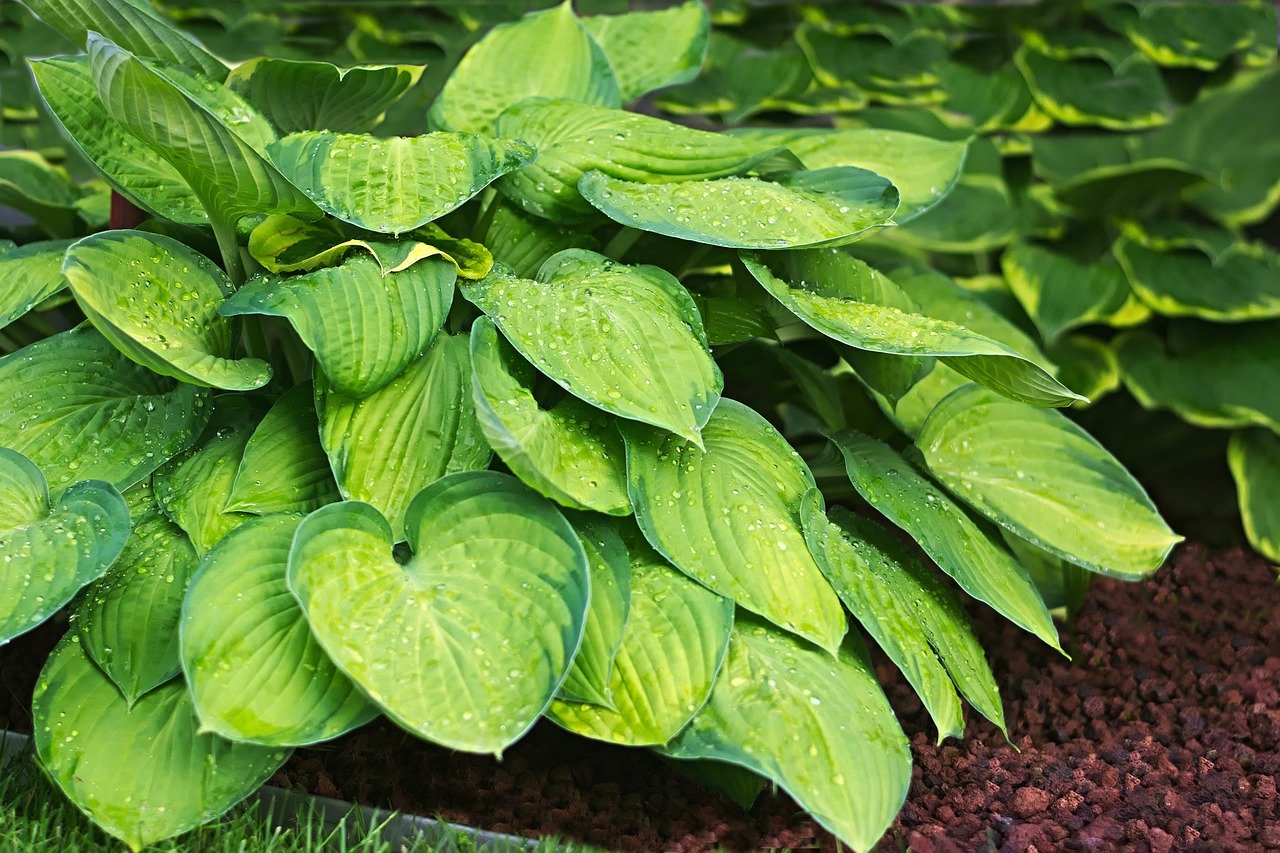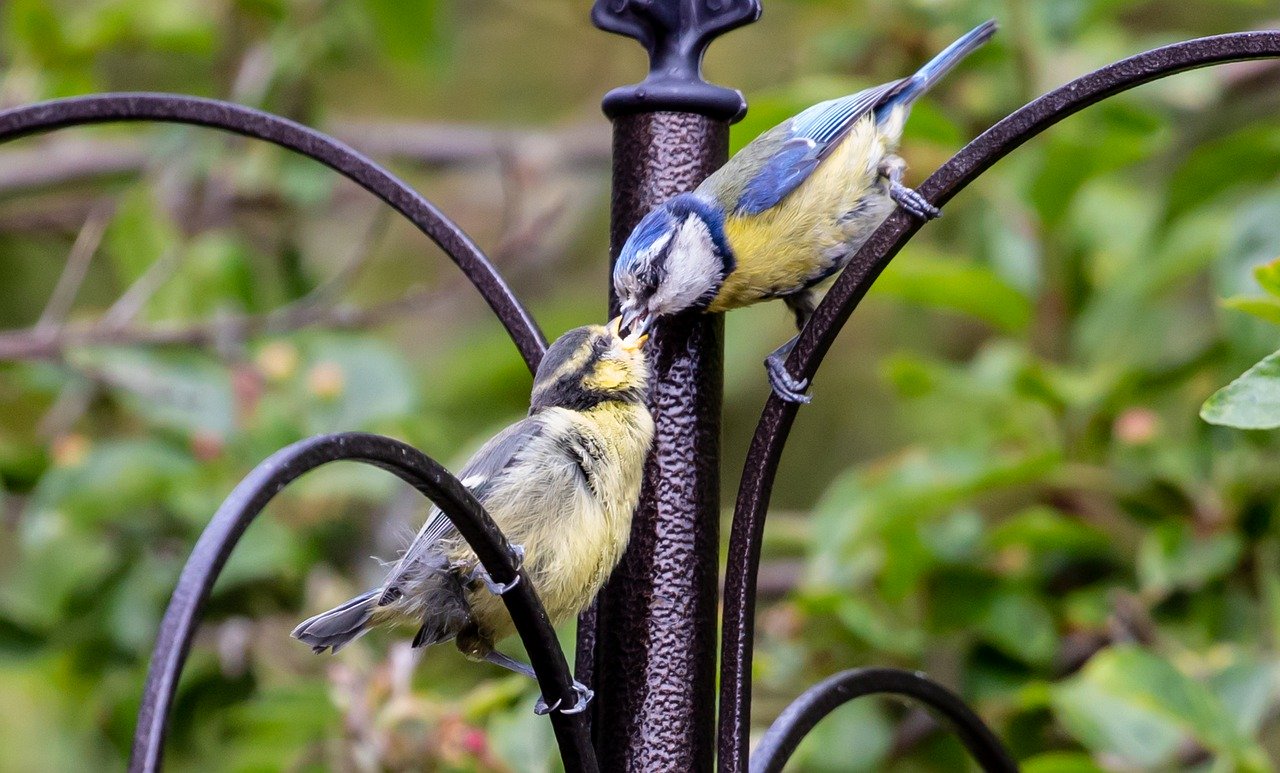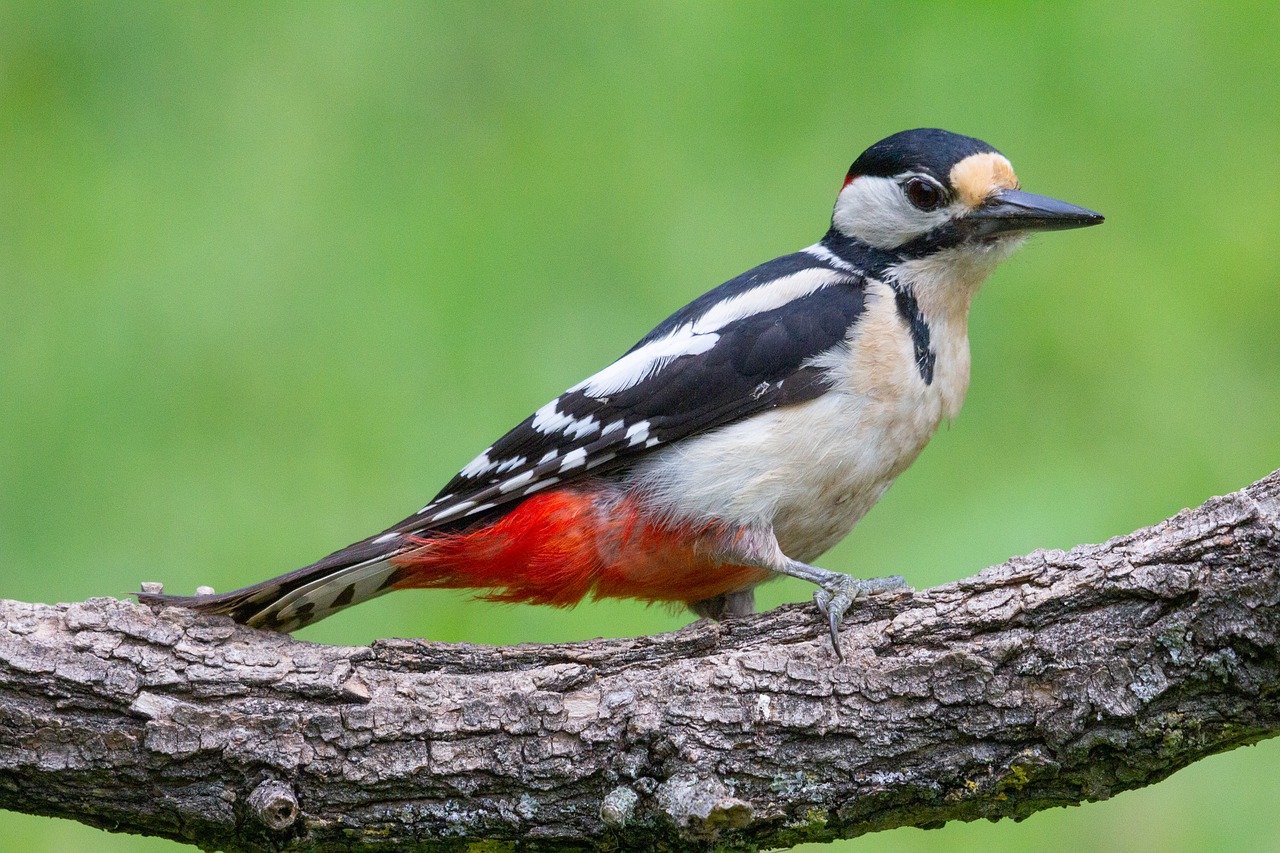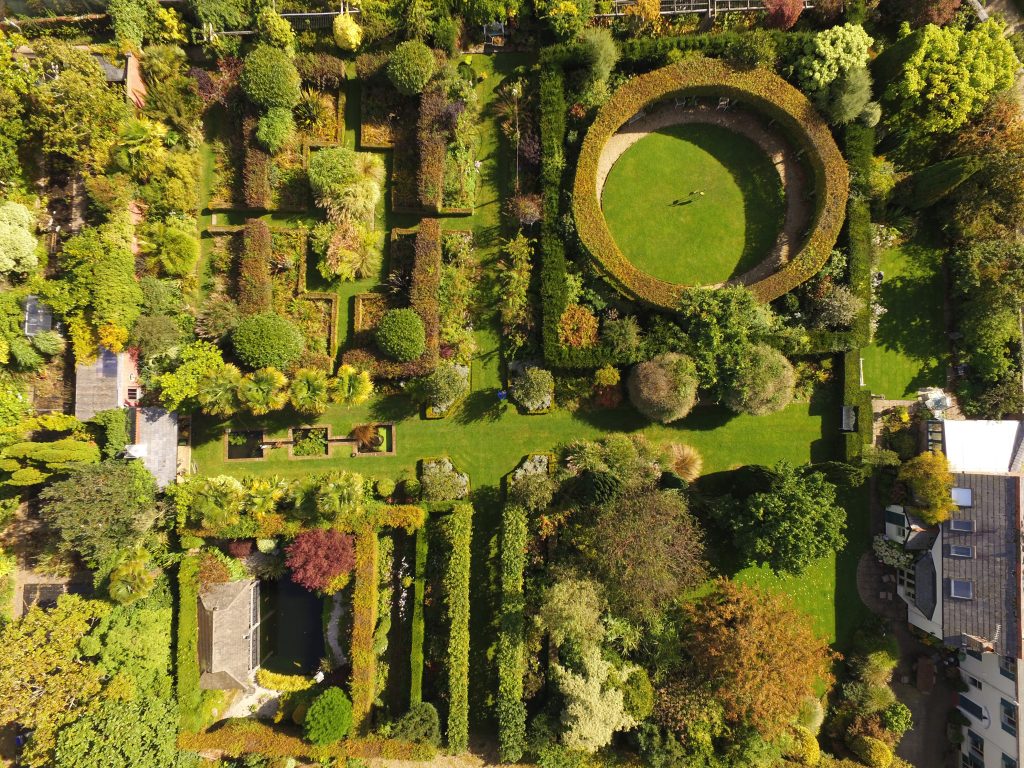Although some varieties are happy in the sun, generally hostas are best suited to shady areas, meaning beautiful, bright foliage in darker, perhaps more tricky spots in the garden. Choose your hosta wisely and you can have vivid flashes of yellow, lime green, blue and jade – against darker foliage such as yew hedging for example, they can look really striking. Paired with ferns, another shade loving plant, and your darker parts of the garden can look lush and thriving
Hostas are natives of the East, and of Japan in particular. These days we can buy thousands of different kinds in the UK. Although they do produce flowers of lilac or white,  some people actually cut them off so they can just enjoy the foliage. There are now some varieties with reddish stalks of both the flowers and the leaves, such as “Cherry Berry” and “Purple Heart”, and these are particularly pretty. Hosta leaves also differ in shape, from more rounded H. sieboldiana ‘Elegans’, the more heart shaped leaves of ‘August Moon’, to the more pointed variety of ‘Blue Arrow’. I love them all and it is always exciting to see their pointed shoots appearing in March and April – they are one of the first perennials to do so.
some people actually cut them off so they can just enjoy the foliage. There are now some varieties with reddish stalks of both the flowers and the leaves, such as “Cherry Berry” and “Purple Heart”, and these are particularly pretty. Hosta leaves also differ in shape, from more rounded H. sieboldiana ‘Elegans’, the more heart shaped leaves of ‘August Moon’, to the more pointed variety of ‘Blue Arrow’. I love them all and it is always exciting to see their pointed shoots appearing in March and April – they are one of the first perennials to do so.
Apple Court Garden has a lot of hosta history. Diana Grenfell, who designed and created the garden along with her husband Roger Grounds, adored hostas. She  progressed from collecting hostas wherever she could (they weren’t typically available in British nurseries back then), to becoming an international authority on them and holding the National Collection of Small Hostas right here at Apple Court.
progressed from collecting hostas wherever she could (they weren’t typically available in British nurseries back then), to becoming an international authority on them and holding the National Collection of Small Hostas right here at Apple Court.
Although the next generation of owners sold hundreds of varieties of hostas, most of the small hostas no longer exist in the garden. We still have different larger specimens though and each year we add a couple more to the garden. Although Diana had the collection of small hostas, she actually bred one of the largest hostas that you can find – the ‘Prince of Wales’.  The actual prince happens to be the Patron of the British Hosta and Hemerocallis Society, of which Diana used to be the president, and she of course got permission from HRH himself to name the hosta. Along with the ‘Prince of Wales’, we have a ‘Big Daddy’, at least 30 years old now, and just last year we planted ‘Empress Wu’, who seems very happy.
The actual prince happens to be the Patron of the British Hosta and Hemerocallis Society, of which Diana used to be the president, and she of course got permission from HRH himself to name the hosta. Along with the ‘Prince of Wales’, we have a ‘Big Daddy’, at least 30 years old now, and just last year we planted ‘Empress Wu’, who seems very happy.
Our 5 Favourite Hostas
How to Care for your hostas
Generally we find hostas to be pretty hardy fellows, but here are a few guidelines:
1. The main issue is annelids. This is a fancy word for slugs and snails.
The amount of birds we have in the garden helps to keep our numbers of these hosta lovers down. But the birds can not get them all and we find these copper coils great for individual hostas that do not have other plants hanging over them (allowing the annelids to climb down!). These copper coils also work really well around plants in pots, and hostas are happy in pots.If you have lots of hostas in overflowing beds, like we do, then one of the best methods of slug and snail decimation is to take a head torch and go around your garden during several late evenings in spring. Removing all the pests at this time really reduces their activity for the rest of the year. We release ours to freedom in the fields.
2. Plant in the shade. Most hostas prefer to be out of the sun. Generally the brighter the leaves, then the more sun they require to keep their bright colours.  So a specimen like the Orange Marmalade listed above, would be best placed in a position that gets at least some sun each day. Other hostas, the blue varieties such as ‘Hapsden Blue’ or green ones can take full shade. There are a few hostas which like the full sun, such as Hosta ‘Grandiflora’, but personally I would prefer to plant hostas in those shady areas that many plants do not like very much.
So a specimen like the Orange Marmalade listed above, would be best placed in a position that gets at least some sun each day. Other hostas, the blue varieties such as ‘Hapsden Blue’ or green ones can take full shade. There are a few hostas which like the full sun, such as Hosta ‘Grandiflora’, but personally I would prefer to plant hostas in those shady areas that many plants do not like very much.
3. Mulching. Hostas like hummus-rich soil, which basically means soil that is rich in organic matter. But even if you have fairly poor soil you can gradually add more organic matter over time. The best way to do this is to establish your own compost heap or bin, although at the nursery we do also sell soil conditioner. You can also use bark or a leaf mulch to help retain moisture. It’s important to remember that hostas don’t like this rich mulch to be over their shoots, they prefer it around the crown of the plant.
4. Lifting and dividing. Hostas don’t really need lifting and dividing on a regular basis like some other perennials – if you have the space it’s much nicer to leave them develop a lovely clump. But if you do want more plants from the original one then it’s very easy to do. Either in the autumn or in very early spring when the plants are still dormant, you can carefully dig up and separate using a spade, with a clean slice through the roots. Water well after replanting.







